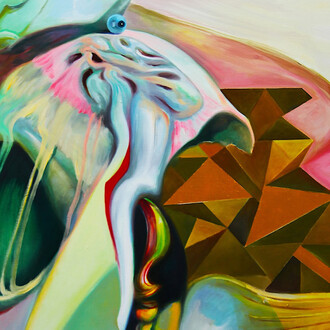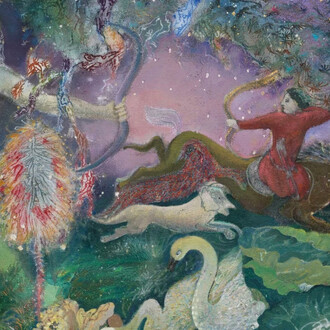Terribly complex and fascinating, history functions a bit like arbitrary dominos, clicking away to create new patterns of the present. So, when Martin Luther posted his 95 Theses to the wall of Wittenberg’s All Saints’ Church in 1517, it wasn’t exactly common knowledge that it would spur the Reformation, bring about new forms of art and information, and eventually lead to a new system of national autonomy outside of the rule of the Catholic Church of the Holy Roman Empire.
When Luther stood before the Imperial Diet of Worms in 1521, the Holy Roman Emperor, Charles V, rather pompously and very mistakenly posed a rhetorical question: Rebels had threatened the Church and the established system for a thousand years with no real change accomplished. What, then, would make Martin Luther and his umbrage with indulgences any different?
The answer to that was the printing press (invented in 1440) and its ability to spread information quickly (at the time) along with Martin Luther’s translation of the Bible into the language of the common folk: German. The work of beautification and gentle mind-manipulation inherent within fell to the hands of the Renaissance artists.
Broken down to a near grotesquely simplistic form, the printing press helped spread the Reformation and Renaissance ideas, causing a sense of identity and kinship through the new religious sects and with a common language; new religions ushered in the 30 Years’ War, which was “subdued” (“settled” or “finished” would not be accurate terms here) by the Peace of Westphalia of 1648, which laid the framework for ideas of nation-states and national sovereignty or self-determination outside of the Roman Catholic Church – it was these elements taken together that would help build the nationalism that we know today. And it is nationalism and traditionalism that has been a pivotal hook or “call to arms” for the recent political swing toward conservatism in England and the United States. Wow, that was dense!
So how does Germany’s bread-and-butter artist of the Renaissance and Reformation play a part in this? Albrecht Dürer (1471-1528) was no doubt a highly skilled drawer and painter, but he very quickly focused his attention to printmaking (woodcuts) and engravings, all which could be used in the burgeoning growth of the printing press, allowing for hundreds of prints to be quickly created and distributed.
In those early centuries of book printing, woodcuts and illustrations were integral to the popularity and success of the books. The better the woodcutting skill, the more books were sold, and the further the information was spread. Naturally, Dürer was not the only artist making woodcuts or images for print at the time, but he had a very specific advantage over many of the others at the time – great talent and growing celebrity status. In 1515, Dürer rose to international fame after trading works with Raphael. His abilities and prestige put him high in demand by printmakers and patrons.
As Germany’s arguably most influential Renaissance artist, it is crucial to know what images he was making with his woodcuts, what kind of books were being produced with those woodcuts – self-help books, essentially. Dürer’s most famous woodcuts and engravings contributed to Bibles and his own book on print design or text design. The latter, Unterweysung der Messung, presented the most logical and geometric ways of producing various Renaissance treasures: architecture, painting, and letters. This contributed both to the strength of printing power as well as to the dissemination of Renaissance ideas, but it is his biblical works that are most felicitous in his connection to the rise of conservatism, Brexit, and Trump.
It is in the printer and publisher’s best interest to produce books that will sell the best, and in the 15th and 16th century that position was unquestionably filled by the Bible. The Bible may very well have sold well on its own, but the multi-faceted artistic skill of both Dürer and other Renaissance artists like Hans Holbein the Younger and Lucas Cranach the Elder secured its desirability and helped incite the public’s opinion against the Catholic Church through artistic ecclesiastical criticism. Like the classiest communist propaganda, the Renaissance images cast specific characters in a positive light and others (often times the Pope) in a negative light to shape public consciousness.
Dürer’s most famous biblical woodcuts include the Apocalypse series from the Book of Revelations published in 1498. Preparing for the year 1500 (one of the many failed set dates set for the apocalypse) Dürer’s woodblock images projected a specific sect’s viewpoint of the religious atmosphere and future. Considering that the images were on both recto and verso (back and front sides) of the pages, the art was seemingly more important than the text, which shows just how important the artists were in forwarding their versions of the Bible – essentially their versions of the world – to those who could get their hands on one and then spread the information along. The pictorial stories were also necessary to spread the viewpoint among the illiterate masses of the time. Although these works were produced before the official beginning of the Reformation, the ideas were being put into place, and the elements were slowly culminating. Dürer and Luther also worked together in Nuremberg in 1518, just after Luther posted his 95 Theses, solidifying their connection and the production of Protestant Christianity.
These days religion still plays a hefty, overt role in national identity, but in many places it has mutated and serves more as an underlying historical shadow. But this new conservatism, which has brought forth the Brexit-Trump era, still relies on the antiquated notions of the cornerstone of (a specific) religion, spurious and romanticised homogeneity, and pushing for a singular language and culture as a binding agent. With Henry VIII making England the first great world power to fully adopt Protestant Christianity as a national religion, and the United States being created as a by-product of that foundation, the pathway to the contemporary begins to come into focus. These “binding” elements were very rarely actually present in a pure fashion in the formation of nations. As for using the German vernacular, that simply helped create a standardised form of language among numerous dialects (many of which still exist), allowing the Bible to be spread among the non-clergy and creating multiple factions due to varying interpretations; these new sects bound themselves together and then fought bitterly and bloodily. Catholics, Protestants, Anabaptists, Anglicans, Lutherans oh my!
Nationalism was a new concept to create connections between people beyond their nuclear worlds of villages or larger cities; at the time it was exciting, and it was also necessary to ward off violent pressure from the various religious sects bubbling up. Our contemporary world is now feeling the effects of the calcification of a fabricated sense of unity based on religion, language, culture, and the will to be together. The crystalised version of this now deeply ingrained and proliferated idea has begun to disintegrate in the modern world due to a web of global cultural flows, and it rears its head through problematic socio-political issues in multicultural societies.
When the status-quo or the understanding of one’s own identity or the structure of an identity is shaken or called into question, as it is in our contemporary times, people tend to grasp ever-more tightly onto tradition – in this case onto their sense of traditional nationality and nationalism. Conservative nationalism in England and the United States, and more specifically Brexit and Trump, is a product of an unintentionally assembled world system created out of various events working off of each other. And it is a very, very long and complicated road that has led up to this point. But if, as many social scientists choose to believe, the printing press is the catalyst for the birth of nationalism and the nation-state system, then Dürer and his beautiful woodcut illustrations were instrumental in pushing a religious viewpoint. And this rebellious religious aberration most certainly played a pivotal role in the progression of nation-states; thus, Dürer led to a grander and deeply consequential effect of the dissemination of nationalistic ideas.pushing a religious viewpoint.
Sources:
Anderson, Benedict. Imagined Communities. London, Verso, 1991.
Charles, Victoria. Albrecht Dürer. Ho Chi Minh City. Parkstone International, 2012
Charles, Victoria. Renaissance. Ho Chi Minh City. Parkstone International, 2012
Eisenstein, Elizabeth. The Printing Press as an Agent of Change. Cambridge, Cambridge University Press, 1980.
Hobsbawm, Erik. The Invention of Tradition. Cambridge, Cambridge University Press, 1980.
Price, David. Albrecht Dürer's Renaissance: Humanism, Reformation, and the Art of Faith. Ann Arbor, The University of Michigan Press, 2003.
















